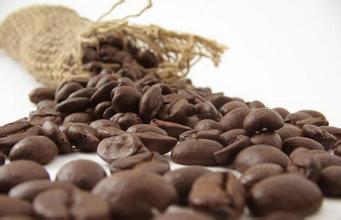Introduction to the characteristics of fine coffee beans in the manor with a unique strong flavor of Costa Rican coffee
Costa Rica's terrain is flat on the coast and isolated by rugged mountains in the middle. It declared an exclusive economic zone of 200 nautical miles and a territorial sea of 12 nautical miles. The climate is tropical and subtropical, and partly neotropical. [2]
climate
Costa Rica's climatic conditions are completely different, completely reversing the classification of the four seasons of the year. There are only two seasons here, from April to December, the rainy season, and the dry season from the end of December to the following April, also known as summer. The annual average temperature of the capital San Jose is 15 ° C, the highest is 26 ° C; the temperature in the coastal areas is relatively high, the average night temperature in the Caribbean is 21 ° C, and the average daily temperature is 30 ° C. It is called the Legislative Assembly, unicameral system, called the Barber Assembly, and exercises important powers such as legislative power. Major government decisions need to be approved by the Legislative Assembly. It is called the "first power" of the country. It is the highest legislative body in the country and consists of 57 members. Deputies are elected directly by voters for a term of four years and cannot be re-elected. The current Legislative Assembly was formed in May 2010, and a new Legislative Assembly was elected on 2 February 2014. The results of the elections are as follows: The ruling National Liberation Party (PLN) has 18 seats, the Civil Action Party (RAC) 12 seats, the Liberal Movement Party (PML) 4 seats, the Christian Social Solidarity Party (PUSC) 8 seats, the All Inclusive Party (PASE) 1 seat, the Broad Front Party (FA) 8 seats, the National Renewal Party (RN) 1 seat, the Costa Rican Renewal Party (RC) 1 seat, the Christian Democratic Union (ADC) 1 seat and 2 independent deputies. The current president is Luis Fernando Mendoza Jiménez of the National Liberation Party, elected in May 2013 for a one-year term. On 1 May 2014, the Legislative Assembly completed its transition. [5]
The Supreme Court is the highest judicial body and consists of 22 judges elected for an eight-year term. At the end of the term, if there is no objection from two-thirds of the members of the Parliament, it can be automatically re-elected. There are four courts, the first, second and third courts each composed of five judges, and the fourth court (Constitutional Court) composed of seven judges, which has the final interpretation of the Constitution. The Chancellor of Justice is appointed by the Legislative Assembly for a renewable term of eight years. Zarella Villanueva Monge, President of the Supreme Court, elected in May 2013, is the first female President of the Supreme Court in history. Costa Rica is one of the first countries in the Americas to establish a democratic system. The idea of freedom and equality is deeply rooted. Costa Ricans love peace and oppose violence. As early as December 1, 1948, Costa Rica announced the abolition of the armed forces and the establishment of the National Guard, becoming the first country in the world without an army. [7]In 2007, there were 18,000 police officers, thus eliminating the possibility of military interference. In the 1970s and 1980s, when the rest of Central America was mired in civil war, it remained peaceful. Costa Rica has maintained political stability for more than half a century due to the abolition of its army, saving a large amount of military expenditure, which has been used to improve people's livelihood, develop education and create a social protection system. As of 2014, Costa Rica is still the country with the highest degree of economic and social development in Central America. Its international competitiveness ranks among the top in Latin America. The Costa Rican government has set the goal of becoming a developed country by 2021.
Coffee is an important source of income for Costa Rica, introduced in 1808 and cultivated for 200 years. Costa Rica has a third of the population invested
Coffee has changed the country, Costa Ricans say, and coffee has made an outstanding contribution to its rich environment. Although Costa Rica ranks third from the bottom in terms of land area in Central America, its economic environment is better than half of that of other countries. Because of its rich people and stable society, Costa Rica has more than 30 national parks.
Coffee was introduced to Costa Rica from Cuba in 1729, and today its coffee industry is one of the most well-organized in the world, producing up to 1700 kilograms per hectare. Costa Rica has a population of 3.5 million, but coffee trees number 400 million, and coffee exports account for 25% of the country's total exports. Costa Rica's volcanic soils are fertile and well drained, especially in the Central Plateau, where the soil consists of successive layers of ash and dust. Costa Rica was thus the first country in Central America to grow coffee and bananas for commercial value. Coffee and bananas are the country's main exports. Costa Rican coffee is full in grains, with ideal acidity and a distinctive aroma. Costa Rica's coffee industry, formerly controlled by the Instituto del Café de Costa Rica (ICAFE), has been taken over by the Official Coffee Council (Oficin del Café). Among coffee exports, those deemed substandard are colored with blue vegetable dye before being recycled for domestic sale. Coffee consumed domestically (dyed blue or undyed) accounts for about 10% of total production, and local coffee consumption per capita is twice that of Italy or the United States.
This coffee producer, all grades and varieties, accounts for one-third of global consumption and a share of the global coffee market.
made in
made in
Although Costa Rica faces several times more natural disasters than other regions, it has enough acreage to make up for high-quality Costa Rican coffee, known as "extra hard beans," which can grow at altitudes above 1500 meters. Altitude has always been a problem for coffee growers. In addition, due to the high altitude drop caused by sufficient rainfall, coffee tree growth is also very favorable. However, although coffee is grown at higher altitudes,
Costa Rica
Costa Rica
Many advantages, but must take into account the additional transportation costs, which is likely to make coffee production unprofitable. Costa Rican coffee has adopted new techniques to increase efficiency, including the use of "electric eyes" to select beans and identify beans of irregular size

Important Notice :
前街咖啡 FrontStreet Coffee has moved to new addredd:
FrontStreet Coffee Address: 315,Donghua East Road,GuangZhou
Tel:020 38364473
- Prev

With attractive nutty aromas, Hawaiian coffee flavor, characteristics, taste and manor
Kona coffee beans from Hawaii have the perfect appearance, and their fruit is extremely full and shiny. The taste of coffee is rich and aromatic, with cinnamon flavor, and the acidity is well balanced. Hawaiian coffee is the only top variety produced in 50 states in the United States, and the native United States is naturally the largest market.
- Next

The flavor of Guatemalan coffee with the aroma of berry and jasmine is introduced to the fine coffee beans of the manor.
United Fruit has its largest estate in Guatemala, and it also owns the Central Guatemala Inter-American Railway Company and Guatemala's only seaport. Driven by the United Fruit Company, the US Ministry of Foreign Affairs began a propaganda war against Guatemala to crack down on the Arbens regime in the name of anti-communism. The CIA cooperates with the opposition among Guatemalan soldiers.
Related
- Detailed explanation of Jadeite planting Land in Panamanian Jadeite Manor introduction to the grading system of Jadeite competitive bidding, Red bid, Green bid and Rose Summer
- Story of Coffee planting in Brenka region of Costa Rica Stonehenge Manor anaerobic heavy honey treatment of flavor mouth
- What's on the barrel of Blue Mountain Coffee beans?
- Can American coffee also pull flowers? How to use hot American style to pull out a good-looking pattern?
- Can you make a cold extract with coffee beans? What is the right proportion for cold-extracted coffee formula?
- Indonesian PWN Gold Mandrine Coffee Origin Features Flavor How to Chong? Mandolin coffee is American.
- A brief introduction to the flavor characteristics of Brazilian yellow bourbon coffee beans
- What is the effect of different water quality on the flavor of cold-extracted coffee? What kind of water is best for brewing coffee?
- Why do you think of Rose Summer whenever you mention Panamanian coffee?
- Introduction to the characteristics of authentic blue mountain coffee bean producing areas? What is the CIB Coffee Authority in Jamaica?

